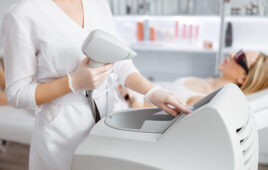
[Image courtesy of waferboard on Flickr, per Creative Commons 2.0 license]
“Not only does it not have to be boring, it is incredibly important—and can be exciting and dare I say fun,” says Drues, who is president of Vascular Sciences (Grafton, MA).
Whether it involves a medical device design, component or software alteration—or some kind of modification to the manufacturing process—one of the most important decisions in the change management process involves whether to log it in as an internal letter-to-file or submit a special 510(k) or PMA supplement with FDA.
Drues has about 25 years experience in medical device regulatory matters, consulting for both FDA and medical device companies. Here are six of the most important things Drues thinks medical device company officials should consider when deciding whether to file a change in-house or formally notify FDA:
1. Initial Investigation
Many medical device companies make an up-front decision about whether to do a letter-to-file versus a filing with FDA, according to Drues. He thinks this industry standard is regrettable and has caused much of the trouble medical device companies find themselves in with FDA.
“Do a little bit of an analysis, do a little bit of an investigation first, and then make a decision about what you do with that information,” Drues said.
The truth is that a letter-to-file is not a shortcut, according to Drues. “You do have to do that investigation of whatever change or changes you’re making here to determine whether those changes are going to affect safety, efficacy, performance or so on.”
The initial investigation doesn’t need to turn into a PhD dissertation or take up months or even weeks. It can take a variety of forms, including interviews with experienced users, review of the literature, actual physical testing, or even some common sense questioning. No matter what, it needs to provide some initial indication of whether the change is significant enough to warrant the company filing with FDA.
2. Risk Profile
FDA released draft guidance in August over “Deciding When to Submit a 510(k) for a Change to an Existing Device” and “Deciding When to Submit a 510(k) for a Software Change to an Existing Device.”
A takeaway Drues has from the draft guidance is that the device’s risk profile and how it is changing should play a role in the decision over whether to do a letter-to-file or submit for a special 510(k).
“Does it change the risk profile of your device? Does it increase the probability of a risk you already knew, or does it create a risk you didn’t have before?” Drues said.
Medical device companies should be asking these questions no matter what, Drues said. “That’s basic engineering. That’s something we should do anyway.”
3. Testing Method
So how do you assess the risk? “Is it a paper assessment, or do we have to do some actual testing? And if we do actual testing, is some simple benchtop testing enough, or perhaps depending on the change or depending on the device, maybe we have to do some animal or clinical testing to assess that risk.”
No matter the testing method, though, the decision about whether to report to FDA is not a black or white issue, in Drues’s opinion. It is not as though there is a specific amount of risk change after which a company should notify FDA.
“In the end, it’s a business decision, whether the company reports this particular change to FDA,” Drues said. Some companies decide to err on the side of doing a letter-to-file. Others take a preventative approach and report almost every change to FDA.
4. Change Creep
Anyone who follows medical device regulation has likely heard of “predicate creep”—the way a string of 510(k) clearances can lead eventually to a device that is nothing like the original predicate device on the chain, raising questions about whether a company should have filed a PMA along the way.
Drues thinks there can also be a problem with “change creep” when it comes to the letter-to-file route. “All of these changes, considered individually, don’t affect safety, efficacy, performance. But when you add them all together, they become significant,” Drues said.
Medical device companies should even consider adding a requirement to their quality system that after so many modifications to a device—three, five, six, whatever makes sense—the engineers evaluate the changes in the aggregate, according to Drues.
Drues is an advocate of device companies considering a “catchup 510(k)” with FDA when encountering significant change creep.
5. Keep the Lines Open With FDA
If the lead reviewer of the original 510(k) is still at FDA, having a good relationship with them can help prevent problems before they occur. Here’s one strategy Drues has tried: arranging a 10-minute “professional courtesy” call to provide an update—short enough that it can be fit in and not have to necessarily turn into a big deal for the regulator. Here’s how Drues would handle such a call:
“I would be very, very clear with the verbiage. I would say, ‘This is just a matter of professional courtesy. We’re not asking you anything. In the three years we’ve had this device on the market, it’s been used X number of thousands of times, and we have the quality system in place and don’t have too many complaints. But we’ve made the following changes to the device. We have gone through an analysis of making sure those changes are not going to impact safety and efficacy. We’re not going to get into details right now, but if you’re interested we can provide that information.’ And at the end of this conversation, the FDA reviewer is going to say one of two things. They’re going to say, ‘Oh great. Thanks for letting me know. It sounds like you’re being responsible, very diligent professionals.’ Or they’re going to say, ‘Hold on here, it sounds as though you’re making some changes that might be considered significant and maybe we need to talk about it further. Maybe we take it to the next step.’”
6. How Safe Is Safe?
Nothing can be 100% safe, but where does one draw the line? And going beyond the risk probabilities that engineers are weighing, how would the public react if an improbably bad thing happened?
Drues says medical device company officials who are changing a medical device often ask him what FDA would want to see regarding safety or efficacy performance. In response, Drues likes to point out that a particular device might end up being used on a family member or friend—perhaps even the medical device company officials themselves.
“When that day occurs, what will it take for you to put your personal stamp of endorsement that this device or change that you’ve made is OK to use in a family member, friend, or perhaps yourselves?”
[Want to stay more on top of MDO content? Subscribe to our weekly e-newsletter.]



